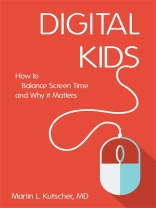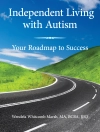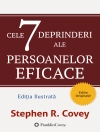For many children and teens daily Internet use is the norm – but where should we draw the line when it comes to digital media usage? This handy book lays out the essential information needed to understand and prevent excessive Internet use that negatively impacts behaviour, education, family life, and even physical health.
Martin L. Kutscher, MD analyses neurological, psychological and educational research and draws on his own experience to show when Internet use stops being a good thing and starts to become excessive. He shows how to spot digital addictions, and offers whole family approaches for limiting the harmful effects of too much screen time, such as helping kids to learn to control their own Internet use. He tackles diverse questions ranging from the effects of laptops in the classroom and reading on a digital screen, to whether violent videogames lead to aggression. The author also explains how ADHD and Autism Spectrum Disorder (ASD) can make you more susceptible to Internet addiction, suggesting practical strategies to suit these specific needs. Discussing both the good and bad aspects of the internet, this book tells you everything you need to know to help children and young people use the internet in a healthy, balanced way.
विषयसूची
1. Introduction. Part One: Problems with the Use of Digital Technology. 2. Psychological/learning effects of Internet use. 3. How does our attention system work? 4. ‘But mom, I can pay attention to more than one thing at a time!’ The myth of ‘multi-tasking’. 5. Screens interfere with developing voluntary attention. 6. Areas where digital learning does excel. 7. Summary of digital vs. print effects on learning. 8. Other psychological effects of the Internet. 9. Neurological effects of Internet abuse. 10. Physical effects of digital media use. Part Two: Problems with the Content of the Digital Technology. 11. Social Media. 12. Does pornography and other media exposure affect sexuality. 13. Does media exposure increase the risk of violent behavior? 14. Do violent videogames lead to violent behavior? 15. Does media effect substance use? 16. Resultant AAP (2013) recommendations regarding digital media. Part Three: Problems Regarding Specific Populations. 17. Very young children and screen time. 18. Children with ADHD and screen time. 19. Children with Autism Spectrum Disorder (ASD) and screen time. Part Four: The Parental Role. 20. What kind of role model am I for my child? 21. How do I set limits for my child? Part Five: Setting Up the Rules: The Family Meeting and Agreement. 22. The family meeting. 23. The agreement. Part Six: Internet Addiction: The Far End of Internet Problems. 24. Internet problems cover a whole range of severity. 25. What is an addiction? 26. How does someone get addicted? 27. How common is Internet addiction? 28. Why is digital media so addicting? 29. What are particularly addicting Internet activities? 30. What personal traits are associated with Internet addiction? 31. How do we treat Internet addiction? Part Seven: Summary. 32. The recent explosion of digital technology and services. 33. The extent of screen time usage. 34. The parents’ dilemma and role in setting limits. 35. Problems with the use of the Internet. 36. Problems with the content of the Internet. 37. Problems regarding specific populations. 38. The parental role. 39. Setting up the rules: the family meeting and agreement. 40. Internet addiction: The far end of Internet problems. References. Resources. About the authors.
लेखक के बारे में
Martin L. Kutscher MD is Assistant Clinical Professor in the Departments of Pediatrics and Neurology of New York Medical College in Valhalla, NY, and a partner of Pediatric Neurological Associates in White Plains, NY, where he has worked since 1987 with children who have seizures or other special needs. Dr Kutscher is board certified in Pediatrics and in Neurology with Special Competency in Child Neurology. He received his BA from Columbia University, his MD from Columbia University’s College of Physicians and Surgeons, and completed a pediatric residency at Temple University’s St. Christopher’s Hospital for Children. His neurology residency and pediatric neurology fellowship were completed at the Albert Einstein College of Medicine.












